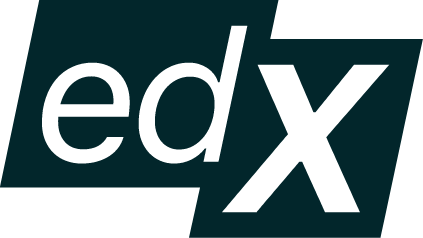
One of the top questions we receive is, “Do I really need to send a cover letter?” The answer is YES! When done well, a cover letter can be a powerful tool for your application package, helping you stand out from the competition. It allows you to tell your story with a passion that transcends your skills and accomplishments.
We want to help you develop a cover letter highlighting your qualifications and motivation, bringing you one step closer to your desired career goal.
This guide is a complete and in-depth look into cover letters. Read straight through, or use the agenda below to jump between topics.
- What is a cover letter?
- Why do employers care about cover letters?
- How do I set myself up for success?
- How do I write a cover letter?
What is a cover letter?
A cover letter is a one-page document you submit as part of your job application alongside your resume or CV. It’s usually three to four brief paragraphs detailing your interest in a job opportunity, and it provides additional relevant information about your skills, experiences, and accomplishments.
As a complement to your resume, which offers a glimpse into your professional and academic qualifications, the cover letter acts as an introduction. It expresses why you’re the best candidate for the job. It is an opportunity for you to connect with your reader by giving them a peek at your personality and passion. The goal of the cover letter is to convince the reader to review your resume and invite you in for an interview.
Why do employers care about cover letters?
Recruiters and hiring managers care about cover letters because they explain your qualifications in a way that resumes do not. As an extension of your resume, your cover letter allows you to showcase things about yourself that are not appropriate for a resume, like the impact of your personal and professional experiences on your career journey. You can expand on relevant details and catch the attention of the recruiter or hiring manager to hopefully secure an interview.
To an employer, the fact that you took the time to write a cover letter shows that you have put in the extra effort. Even if the recruiter or hiring manager doesn’t read it, they will know that you really want the job and that you are committed to taking all necessary steps to show you’re worth it.
How do I set myself up for success?
Before you begin writing your cover letter, here are some tips for setting yourself up for success:
- Always customize your cover letter – Tailor your cover letter to the specific company and role of interest. Cite specific responsibilities outlined in the job description and clarify why your own experiences are a good match.
- Keep your cover letter concise – One page is more than enough when it comes to cover letters. The optimal length for a cover letter is 250 to 400 words.
- Follow submission instructions – In the job description, look for specifics on cover letter parameters such as a preferred file type (Word or PDF) or details to include.
- Avoid cliches – Saying you’re a “great team player” or “effective communicator” will get you nowhere. Instead, aim to demonstrate your skills by backing them up with your experience. For example, “I’m a great communicator” versus “I’m a great communicator, having closed 50+ sales per month at my last job.”
- Enhance your personal brand – Use the same fonts, margins, colors, and style in your resume and cover letter. In this way, you can highlight your personal brand and make more of an impression on the recruiter or hiring manager.
- Use action verbs – To make your achievements stand out, use action verbs. Instead of repeating “I was responsible for” or “I was in charge of,” you can use action verbs such as “managed” or “coordinated.”
Expert advice
“Your cover letter is an opportunity to own your narrative. If you’re applying for your dream job or company, say it in the cover letter. This is an opportunity to share your passion and enthusiasm for the role and company. Make your reader understand why you’re the best person for the job.”
– Tramaine I., career expert at edX

How do I write a cover letter?
In a competitive job market, an effective cover letter is one way to make your job application stand out. Although a time-consuming task, writing a cover letter doesn’t have to be tedious. The following instructions will help you write effective cover letters for the rest of your career.
A cover letter can be broken down into three sections that answer the following questions:
- Why am I interested in you?
- Why you should be interested in me.
- Where do we go from here?
It typically has a salutation, an introduction, body paragraphs, and a conclusion. The introduction, body paragraphs, and conclusion align with the three questions mentioned above. Below is a breakdown of each cover letter section, examples, and design and format suggestions.
The salutation includes a header, the employer’s physical address, and a formal greeting to the recruiter or hiring manager. First, copy the header from your resume to your cover letter. This helps to maintain brand consistency and ensure a cohesive application package. Next, you’ll want to include the company name and full physical address, which can be found with a simple internet search. Last, you should address the hiring manager or recruiter by name.
Greeting the hiring manager or recruiter by name on your cover letter is good practice. Doing so shows that you have done your homework and helps you make an immediate connection with your reader. Here are some tips for finding the hiring manager or recruiter’s name:
- Check the job posting. Sometimes the hiring manager’s name is included near the end of the posting.
- Check the email in the job posting.
- Check the company website. Small and mid-size organizations may have employee information and bios listed directly on their websites.
- Check LinkedIn. Using the search bar, type in variations of the role and company to identify managers in the department of interest.
- Ask your connections. Do you have any connections working for the company? Are you connected to someone who knows someone who works for the company? Ask them who the hiring manager is for the role you seek.
- Call the company. Consider calling the front desk and asking the office manager.
If you cannot find a specific name for a hiring manager, simply write, “Dear Hiring Manager.” Be mindful not to assume a person’s gender pronouns in your salutations.
Your introductory paragraph sets the tone for the cover letter. It also answers the question, “Why am I interested in you?” Try to keep your first paragraph conversational. Present information to let the reader know you are authentically interested in the position and company. Include the following details in your introduction:
- What job you are applying to, and at what company?
- How did you find out about the role? If you were recommended for the role, list the recommender’s name here.
- Why are you an excellent fit for the role?
- Why are you interested in the company?
Here is an example:
My interest in Fidelity began two years ago when I heard a presentation by Chairman Edward C. Johnson entitled “Issues Facing the Mutual Fund Industry.” Since then, I have kept a keen eye on your website hoping that an appropriate opportunity may become available. I was thrilled to learn of your new marketing campaign that targets the Hispanic and Caribbean communities in Albany, where I have significant experience.
The body paragraphs should describe your most relevant experience, skills, and accomplishments and how you plan to apply those elements to the position you’re applying for. It should be clear to the reader how your experience and interests directly connect to your desired position. The body paragraphs answer the question, “Why should you [the employer] be interested in me?”
The organization expects you to do the matching work for them. If you can understand their needs and communicate your ability to solve their problems, you’ll stand out and be more likely to get an interview. Here are a few tips to help you communicate why you’re the best candidate:
- Choose a narrative (two or three paragraphs) or bullet point format. A narrative format is more traditional and is best to convey qualitative soft skills; however, if the position is data-driven, you may benefit from using bullet points for conveying metrics and impact.
- Pick three to five of the most important requirements from the job description based on the strongest skills in your background.
- Use those to write a short list or a few paragraphs that describe how your skills, experience, and knowledge allow you to meet their requirements.
Doing this makes it easy for the reader to determine how and why you’re a good fit.
Here is an example:
I would bring Fidelity an advanced degree from ABC University School of Information Studies with an emphasis on finance and organizational development. Also, eight years of experience with social service agencies in Albany, culminating in my most recent position, where I managed a $7.5M housing trust and a staff of 23. Additionally, I have advanced Spanish and Creole language skills and experience working abroad in El Salvador and Belize as an intergovernmental relief liaison.
This is your closing statement to reiterate your interest, share a professional or personal characteristic (if warranted), and explain why you are a viable candidate for the position. Graciously ask for an opportunity to discuss the role and your qualifications in more detail. The conclusion addresses the question, “Where do we go from here?”
Close the paragraph by thanking the employer for their consideration.
Here is an example:
In closing, I am excited about possibly being involved in Fidelity’s work targeting the Hispanic and Caribbean communities. I welcome the opportunity to discuss the position and my potential contribution with you. I am available for an interview at your convenience. Thank you for your consideration.
Before you begin writing your cover letter, there are other considerations to have in mind. Because this is a professional document, there are certain guidelines regarding font, margins, grammar, and tone that you should follow. Below, you will find design and formatting guidelines for writing a cover letter.
General guidelines
- Your name and headlines stand out
- Balanced margins, between 0.5-1”
- Text fills the page without overcrowding
- Design does not obscure necessary text/content
- No more than one page
- No hanging lines (where just a few words take up an entire line)
Professional text
- Font size not less than 10pt and no more than 12pt
- Consistent and professional font style. Professional font styles include Arial, Calibri, Cambria, Georgia, Helvetica, and Times New Roman
Grammar, punctuation, and spelling
- Consistent punctuation throughout
- No grammatical or spelling errors
- No abbreviations or acronyms
Professional tone
- No jargon or slang
- Avoid superlative adjectives like, “great,” “good,” or “awesome”



